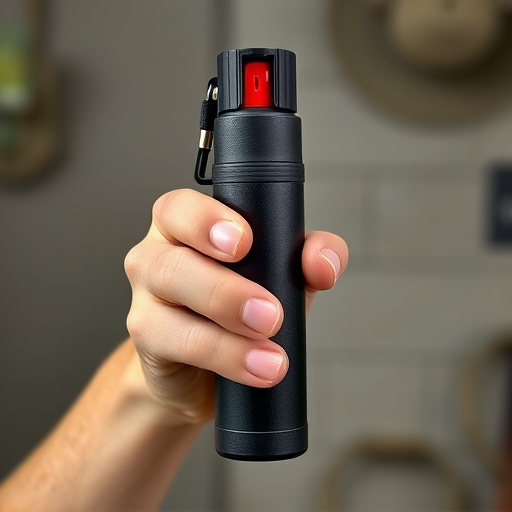Understanding pepper spray exposure requires recognizing its symptoms, from immediate irritations like tears and red eyes to severe reactions such as nausea and dizziness. Effective treatment involves moving to a safe area, rinsing affected areas with clean water for at least 10 minutes, using steam or a humidifier for nasal passages, applying cold compresses to skin, and seeking medical attention if symptoms persist. Preventative measures include maintaining distance, learning self-defense, and responsible pepper spray usage, while aftercare tips emphasize removing contaminated clothing, rinsing eyes, seeking fresh air, staying hydrated, and avoiding scratching affected areas. Consulting medical professionals is advised for severe reactions or persistent symptoms.
“Discover the power of capsicum-based personal protection spray and its impact on individual safety. This article demystifies pepper spray exposure, delving into its symptoms, effects, and effective treatment strategies. From understanding the science behind capsicum irritants to practical steps for post-exposure care, we guide you through every aspect of managing and preventing potential incidents. Learn essential tips on how to treat pepper spray exposure and ensure your well-being.”
- Understanding Pepper Spray Exposure: Symptoms and Effects
- Treatment Steps for Capsicum-Based Personal Protection Spray Exposure
- Preventative Measures and Aftercare Tips for Future Incidents
Understanding Pepper Spray Exposure: Symptoms and Effects
Understanding Pepper Spray Exposure: Symptoms and Effects
When exposed to capsicum-based personal protection spray, individuals can experience a range of symptoms that vary in intensity depending on factors like concentration, delivery method, and individual sensitivity. The primary active ingredient in these sprays is capsaicin, which irritates the eyes, nose, throat, and skin. Immediate reactions may include tears, coughing, difficulty breathing, red and watery eyes, and pain or burning sensations in the affected areas. In more severe cases, symptoms can escalate to nausea, dizziness, headaches, and even temporary blindness.
Knowing how to treat pepper spray exposure is crucial for mitigating discomfort and potential health risks. The first step is to move to a safe, well-ventilated area immediately after exposure. Removing any contaminated clothing or accessories that may still hold the spray is essential. Rinsing eyes with clean water for at least 15 minutes helps flush out capsaicin. Inhaling steam from hot water or using a humidifier can aid in clearing nasal passages and soothing throat irritation. Applying a cold compress to affected skin areas can alleviate pain and reduce swelling. If symptoms persist or worsen, seeking medical attention is recommended.
Treatment Steps for Capsicum-Based Personal Protection Spray Exposure
In the event of exposure to capsicum-based personal protection spray, the first step in treatment is to immediately move to a safe area and rinse the affected areas with plenty of clean water. This helps to dilute and wash away the capsaicin oil, which causes the burning sensation. It’s important to remember not to use soap or other cleansers as they can spread the chemical further.
After rinsing, remove any contaminated clothing and thoroughly wipe down your skin with a damp cloth. If eye contact occurs, gently flush them with clean water for at least 15 minutes. Seek immediate medical attention if breathing becomes difficult or persistent irritation persists. How to treat pepper spray exposure also involves monitoring symptoms like coughing, nausea, and dizziness, and ensuring adequate hydration to aid in recovery.
Preventative Measures and Aftercare Tips for Future Incidents
Preventative Measures and Aftercare Tips for Future Incidents
To mitigate the effects of capsicum-based personal protection spray exposure, it’s crucial to understand how to prevent incidents from occurring in the first place. One effective strategy is to maintain a safe distance from individuals or scenarios that might trigger its use. Regularly attending self-defence classes can equip you with the skills to avoid dangerous situations and, if necessary, de-escalate conflicts peacefully. Carrying your pepper spray responsibly and ensuring it’s easily accessible can also serve as a deterrent for potential aggressors.
In terms of aftercare, immediate actions should include removing any contaminated clothing or eye gear, rinsing eyes thoroughly with clean water for at least 15 minutes, and seeking fresh air if possible. Consulting medical professionals is advisable, especially if symptoms persist or severe reactions occur. How to treat pepper spray exposure involves keeping a calm mind, staying hydrated, and avoiding scratching or rubbing the affected areas. Following these simple yet effective tips can help reduce discomfort and speed up recovery, ensuring you’re better prepared for future incidents.
Capsicum-based personal protection sprays can be effective tools for self-defence, but it’s crucial to understand their impact. By knowing how to treat pepper spray exposure and taking preventative measures, you can minimise discomfort and ensure proper aftercare. Familiarising yourself with the symptoms, following treatment steps, and adopting care tips will empower you to handle potential incidents effectively, promoting safety and peace of mind in various situations.
